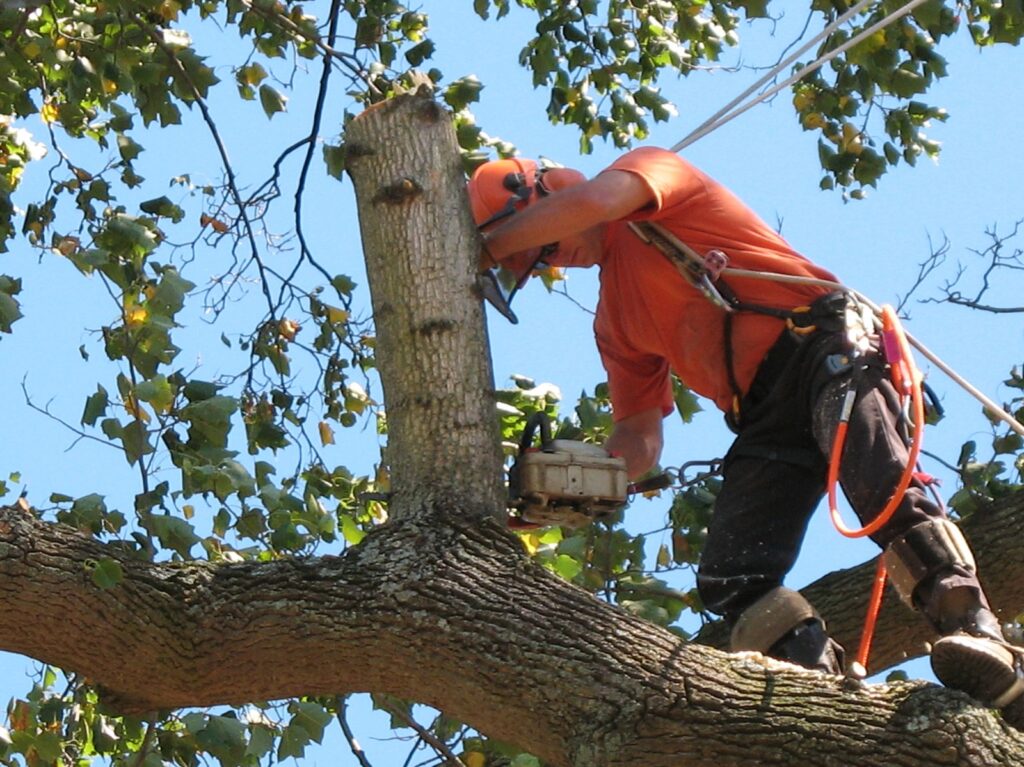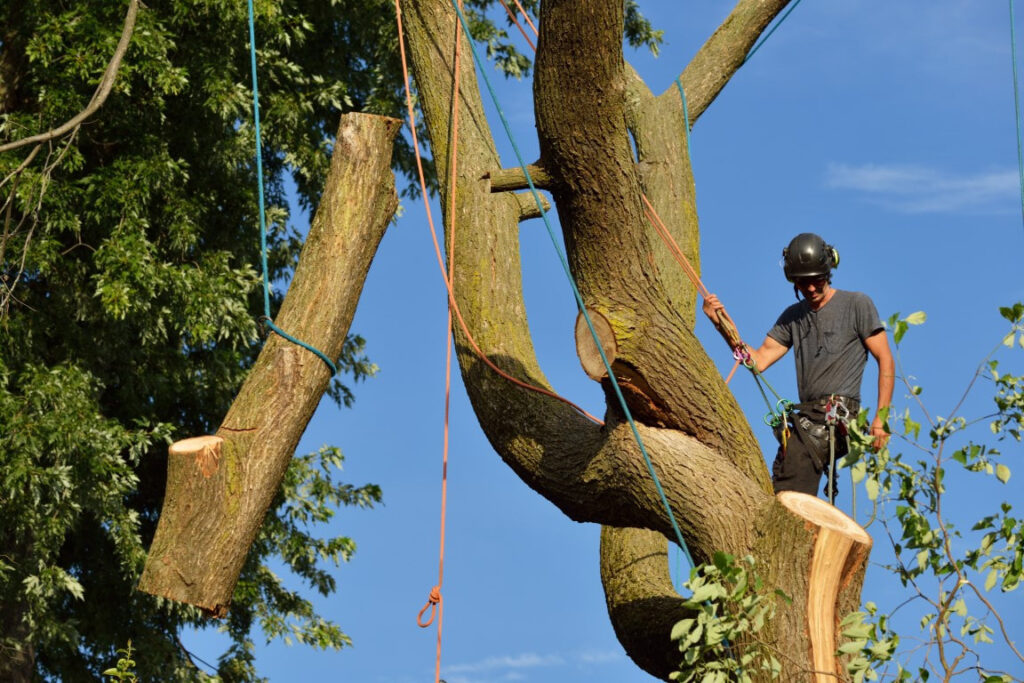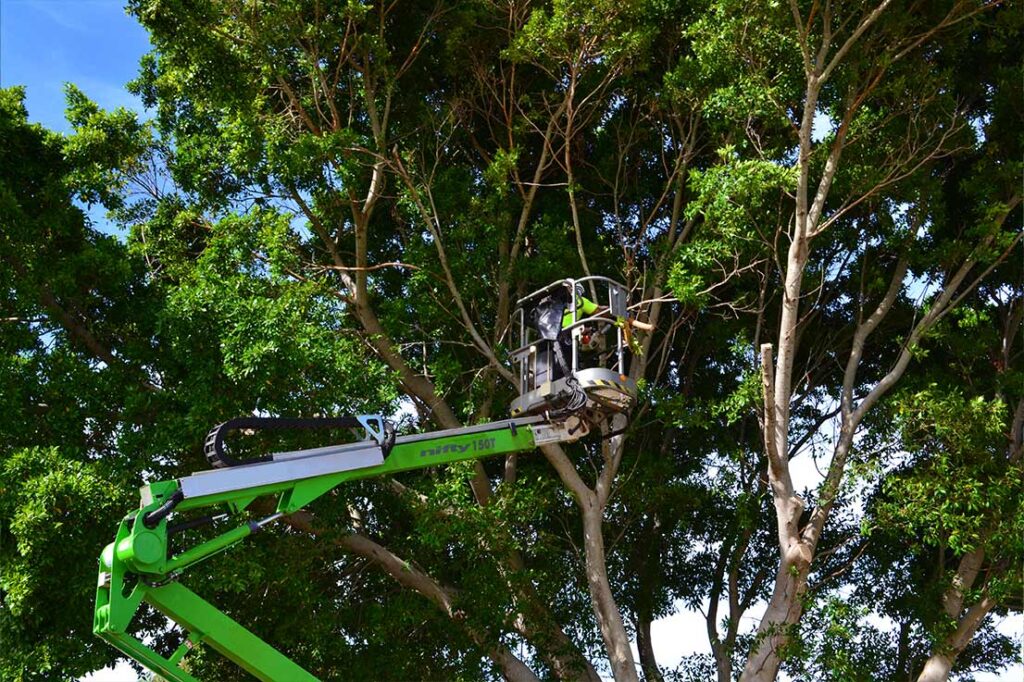Understanding the Importance of Tree Pruning
Tree pruning is an essential practice that contributes to the overall health and vitality of your landscape. By selectively removing certain branches or parts of a tree, pruning not only improves the tree’s aesthetics but also promotes its long-term well-being. Pruning is not simply about trimming back overgrown branches; it involves careful consideration of the tree’s structure and growth patterns to ensure optimal health and growth. Let’s delve deeper into the importance of tree pruning.
The Connection Between Tree Health and Pruning
Healthy trees are the foundation of a vibrant landscape. Pruning plays a crucial role in maintaining their health by removing dead, damaged, or diseased branches. These decayed branches can serve as entry points for pests and diseases, compromising the overall health of the tree. By regularly pruning and removing such branches with reseaonable tree pruning cost, you are reducing the risk of infections and allowing the tree to allocate its resources more efficiently to healthy growth.
How Pruning Contributes to Landscape Vitality
In addition to promoting tree health, pruning also enhances the overall vitality of your landscape. By selectively removing branches, pruning improves airflow and sunlight penetration throughout the tree’s canopy. This not only benefits the pruned tree but also neighboring plants and shrubs. Increased airflow helps reduce the likelihood of fungal diseases and enhances the circulation of beneficial insects, aiding in the ecological balance of your yard. Furthermore, improved sunlight exposure promotes photosynthesis, the process by which trees convert sunlight into energy, ensuring optimal growth and vitality.

The Science Behind Tree Pruning
Understanding the science behind tree pruning helps demystify the process and empowers you to make informed decisions about your landscape’s health. Two key factors come into play when considering the science behind tree pruning: the role of photosynthesis in tree health and how pruning affects tree growth and development.
The Role of Photosynthesis in Tree Health
Photosynthesis is the biological process through which trees convert sunlight, water, and carbon dioxide into energy and oxygen. Pruning can enhance photosynthesis by allowing more sunlight to reach the tree’s leaves, which increases the production of energy-rich carbohydrates. These carbohydrates are crucial for tree growth, root development, and overall health, making pruning a vital practice for fostering vibrant, thriving trees.
How Pruning Affects Tree Growth and Development
Pruning influences tree growth and development in several ways. By removing competing or crossed branches, pruning helps redirect the tree’s energy into primary branches, resulting in stronger and more stable growth. Additionally, pruning stimulates the production of hormones that promote new growth and branch formation. By strategically pruning, you can shape the tree’s structure, encourage balanced growth, and prevent the development of weak or hazardous branches.
Different Techniques of Tree Pruning
Tree pruning techniques vary depending on the desired outcome and the specific needs of the tree. Let’s explore two commonly used techniques: thinning cut and reduction cut.
Thinning Cut: Promoting Healthy Growth
The thinning cut technique involves selectively removing branches to enhance airflow and reduce foliage density. By eliminating overcrowded branches, light can penetrate deeper into the canopy, reducing the risk of fungal diseases and promoting healthy growth. Thinning cuts are particularly beneficial for trees with dense foliage or those growing in areas with limited sunlight. When performing a thinning cut, it is important to consider the tree’s natural growth patterns and avoid excessive removal of foliage, which can stress the tree.
Reduction Cut: Controlling Tree Size and Shape
The reduction cut technique is employed when you want to control the size or shape of a tree. By selectively removing larger branches or stems, you can reduce the overall height or spread of the tree. This technique is often used to prevent tree branches from interfering with power lines, buildings, or other structures. When performing a reduction cut, it is essential to make clean, precise cuts as close as possible to the branch collar to promote proper healing and minimize potential damage to the tree.

When and How Often to Prune Your Trees
Pruning your trees at the right time and frequency is crucial for maintaining their health and promoting optimal growth. Let’s explore the seasonal considerations for tree pruning and the frequency of pruning for different tree species.
Seasonal Considerations for Tree Pruning
The best time to prune trees can vary depending on the species and local climatic conditions. In general, pruning is often recommended during the dormant season, which is typically late winter or early spring. Pruning during this period allows the tree to heal and recover quickly as it prepares for new growth in the upcoming growing season. However, there are exceptions, such as certain flowering trees that should be pruned immediately after flowering to avoid removing potential blossoms. Consulting with a professional arborist can help determine the ideal time for pruning specific trees in your landscape.
Frequency of Pruning for Different Tree Species
The frequency of pruning can vary depending on the growth rate and specific needs of different tree species. Fast-growing trees may require more frequent pruning, while slow-growing trees may need less frequent attention. Regular monitoring of your trees is key to identifying when pruning is necessary. It’s important to note that excessive or improper pruning can harm the tree, so it’s best to seek advice from an arborist to determine the appropriate pruning schedule for each species in your landscape.

Safety Measures and Best Practices in Tree Pruning
Tree pruning should be done with safety in mind to prevent accidents and minimize potential damage to the tree. Let’s explore the essential tools for safe and effective pruning and tips for preventing damage to trees during the process.
Essential Tools for Safe and Effective Pruning
Having the right tools is crucial for safe and effective pruning. Here are some essential tools you’ll need:
- Pruning shears or secateurs for smaller branches
- Loppers for thicker branches
- Pole pruners for reaching higher branches
- Pruning saw for larger branches
- A sturdy ladder or harness for accessing tall trees
Using quality tools and keeping them clean and sharp ensures clean cuts and reduces the risk of injury to yourself and the tree.
Tips for Preventing Damage to Trees During Pruning
Proper pruning techniques can help minimize potential damage to trees. Here are some tips to keep in mind:
- Always start with a plan and identify the branches you intend to remove.
- Make clean, precise cuts just outside the branch collar to promote proper healing.
- Avoid removing more than 25% of the foliage in a single pruning session to prevent stress on the tree.
- When pruning large branches, use the three-cut technique to prevent bark tearing and ensure a clean cut.
- Regularly sanitize your tools with a disinfectant to prevent the spread of diseases between plants.
By following these best practices, you can ensure safe and effective tree pruning while minimizing the potential negative impact on tree health.
Conclusion
Tree pruning is a vital practice that enhances the health and vitality of your landscape. By understanding the importance of pruning, the science behind it, and the different techniques available, you can make informed decisions for the well-being of your trees. Knowing when and how often to prune, as well as implementing safety measures and best practices, further ensures the success of your pruning efforts. By incorporating tree pruning into your landscape maintenance routine, you are not only promoting healthier and more vibrant trees but also creating a beautiful and thriving outdoor environment for years to come.
